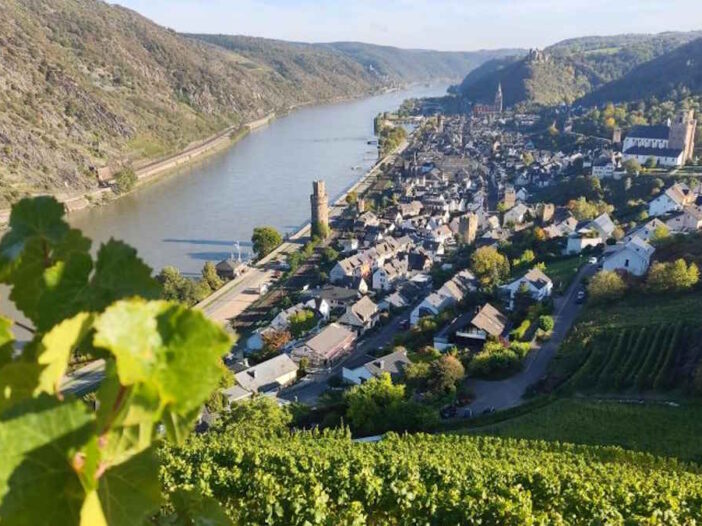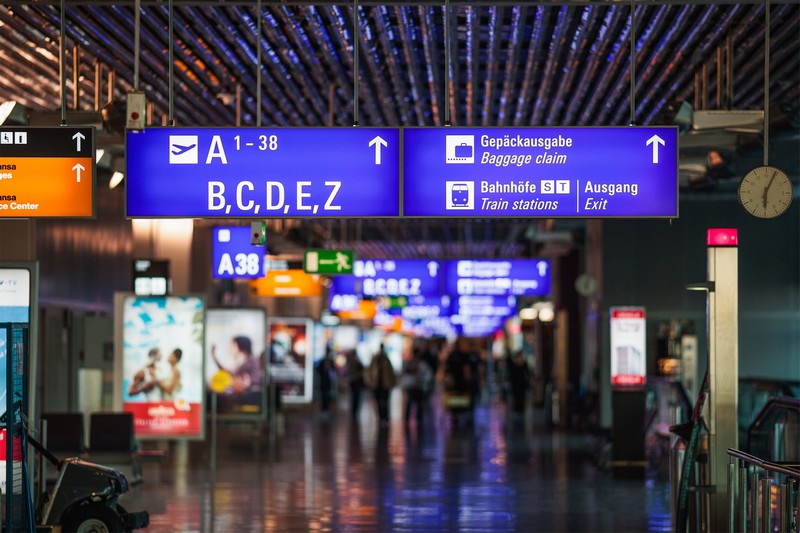
Travel guide for visiting the Wine Route in Germany, including tourist attractions, cities, itineraries, wineries and practical tips.
The Wine Route in Germany, known as “Deutsche Weinstraße”, is one of the oldest wine routes in the world, located in the Palatinate (Pfalz) wine region. It stretches for around 85 kilometers, from the city of Bockenheim in the north to Schweigen-Rechtenbach on the French border in the south.
one of the most popular tourist routes in Europe, attracting visitors from all over the world with its picturesque landscapes, charming cities and delicious wines.
Brief History of the Wine Route in Germany
The German Wine Route, or “Deutsche Weinstraße”, was officially opened on October 19, 1935, in an attempt to revitalize the economy and promote winemaking in the Palatinate (Pfalz) region. Stretching around 85 kilometers from Bockenheim in the north to Schweigen-Rechtenbach on the French border, the route was designed to attract tourists and highlight the area’s rich winemaking tradition. This initial effort helped establish the Wine Route as one of the first and most important wine routes in the world.
In the following decades, especially in the 1950s and 1960s, the Wine Route gained popularity among local and international tourists. Infrastructure improvements, such as the construction of hotels, restaurants and visitor centers, along with the promotion of wine festivals, have contributed to the growth of wine tourism. Events such as the Dürkheimer Wurstmarkt, the world’s largest wine festival, began to attract large crowds, solidifying the route’s importance in Germany’s tourist and cultural scene.

Today, the Deutsche Weinstraße is a significant tourist attraction, known for its picturesque wine villages, lively festivals and, of course, its excellent wines, especially Riesling. The region has adapted to modern trends, with many wineries adopting sustainable and organic practices. As well as preserving and promoting wine culture, the route continues to be a vital economic pillar for the Palatinate, attracting thousands of visitors who contribute to the local economy and enjoy Germany’s rich wine heritage.
Find the best deals and options for flights and airport transfers to your hotel.
Main Cities on the Wine Route in Germany
Some of the most popular cities on the German Wine Route include:
- Bockenheim: The gateway to the German Wine Route, Bockenheim is known for its award-winning vineyards and wineries.
- Deidesheim: A medieval town with a beautiful old town, Deidesheim is a great place to explore the local shops and restaurants.
- Neustadt an der Weinstraße: The largest city on the German Wine Route, Neustadt is known for its annual wine festival and beautiful Baroque architecture.
- Speyer: A historic city with a stunning Romanesque cathedral, Speyer is a great place to learn about the region’s history.
- Triberg: Located in the Black Forest, Triberg is famous for its waterfalls and cuckoo clocks.
- Schweigen-Rechtenbach : In the Pfalz region, the village is known for its vineyards, stunning scenery and historic charm.
Search for the best place to stay in Neustadt an der Weinstraße, including hotel and guesthouse with different prices .
Map of the central area of Deutsche Weinstrasse :
States of Germany
The German Wine Route crosses the following states:
- Baden-Württemberg: Home to the Black Forest and the Ortenau wine region, Baden-Württemberg is a state with stunning scenery and a rich culture.
- Rhineland-Palatinate: Home to the wine regions of Mosel, Saar and Pfalz, Rhineland-Palatinate is known for its high-quality white and red wines.
- Hesse: Home to the Rheingau wine region, Hesse is known for its dry Rieslings and the beautiful city of Rüdesheim.
- Bavaria: Home to the Franconia wine region, Bavaria is known for its dry white wines and full-bodied reds.
Main Regions and Wineries in Germany
Here are Germany’s top wine regions and some of its most renowned wineries:Here are Germany’s top wine regions and some of its most renowned wineries:
Bockenheim
- Highlights: Bockenheim is the starting point of the Wine Route. Here you will find the “Haus der Deutschen Weinstraße”, which serves as an information center for tourists.
- Wineries: Weingut Schäfer, Weingut Pflüger.
2 Bad Dürkheim
- Highlights: Famous for the largest wine barrel in the world, the “Dürkheimer Riesenfass”. The city is also home to the Wurstmarkt, the largest wine festival in the world.
- Wineries: Weingut Fitz-Ritter, Weingut Michael Schroth.
Deidesheim
- Highlights: One of the best-known and charming wine towns, with many gourmet restaurants.
- Wineries: Weingut Reichsrat von Buhl, Weingut Dr. Deinhard.
Neustadt an der Weinstraße
- Highlights: Headquarters of the “Deutsche Weinlese”, where the queen of German wine is elected annually. Neustadt is also one of the largest cities along the route.
- Wineries: Weingut Müller-Catoir, Weingut Weegmüller.
Landau in der Pfalz
- Highlights: A university city with a well-preserved historic center. Landau is known for its wine festivals and Christmas market.
- Wineries: Weingut Johanneshof, Weingut Vögeli.
Schweigen-Rechtenbach
- Highlights: The final point of the Wine Route, located on the border with France. Here you find the “Weintor”, a monumental gate that marks the end of the route.
- Wineries: Weingut Friedrich Becker, Weingut Jülg.

Main Grape Varieties
- Riesling: Germany’s most famous variety, known for its vibrant acidity and aging ability.
- Silvaner: Popular in the Palatinate region, it produces fresh and elegant wines.
- Spätburgunder (Pinot Noir): The region’s main red grape, known for its complex and sophisticated wines.
- Dornfelder: A red variety that produces fruity wines with an intense color.
Events and Festivals
- Dürkheimer Wurstmarkt (Bad Dürkheim): Held in September, it is the largest wine festival in the world.
- Weinlesefest (Neustadt): Held in October, with the election of the queen of German wine.
- Deidesheimer Weinkerwe (Deidesheim): A traditional wine festival held in August.
Best Attractions on the Wine Route in Germany
In addition to the cities and wineries mentioned above, some of the best attractions on the German Wine Route include:
- Eltz Castle: One of the best-preserved medieval castles in Germany, Eltz Castle is a must-see for any visitor to the region.
- Speyer Cathedral: One of the largest Roman cathedrals in Europe, Speyer Cathedral is a masterpiece of Romanesque architecture.
- Black Forest: One of the most popular forests in Germany, the Black Forest is a great place for hiking, cycling and skiing.
- Triberg Waterfalls: The highest waterfalls in Germany, the Triberg Waterfalls are an impressive sight.
- German Wine Museum: Located in Neustadt an der Weinstraße, the German Wine Museum is a great place to learn about the history and culture of German wine.
Tips for visiting the Wine Route in Germany
- The best time to visit the German Wine Route is during spring or autumn, when the weather is mild and the landscapes are at their most beautiful.
- It is recommended that you rent a car to travel the German Wine Route, as this will give you more flexibility to explore the towns and wineries at your own pace.
- Another way is to do some of the paths by bike. There are bicycle rental services available in several cities.
- Make sure you book your accommodation in advance , especially during peak season. There are many accommodation options, from luxurious hotels to family inns.
- Enjoy the local cuisine, which pairs perfectly with the region’s wines. Try dishes like Saumagen, Flammkuchen and Zwiebelkuchen.
- Don’t forget to try the local wines! The German Wine Route is home to some of the best wines in the world.
- Consider taking guided winery tours to learn more about wine production and enjoy exclusive tastings.
The Wine Route in Germany offers a unique experience for wine and culture lovers. With its beautiful landscapes, exceptional wines and historic charm, it is an unmissable destination for any oenophile.
Best Touristic Attractions and Guided Tours in Germany
Suggestions of guided tour deals and touristic attractions in Germany. For planning a trip to Germany, we have some publications that can help a lot:
- Berlin, Germany – Top 20 sights and things to do and visit
- The Best Christmas Markets in Germany
- Best travel tips for Oktoberfest in Munich, Germany
- Burg Eltz – Travel Guide to Visit One of the Most Beautiful Castle of Germany
- Munich, Capital of Bavaria, Germany – What to See and Fun Things to Do
We also write about 8 of the best attractions on the Romantic Road in Germany with up-to-date tips, be sure to check it out .
What Easter is like in Germany: Traditions, tips and practical information for 2024!
Are you traveling to Germany?
Specifically about international travel by plane to Frankfurt Airport, we have the best post:
Where to stay near Frankfurt Airport Germany – FRA, Frankfurt/Main
Search for the best place to stay near Frankfurt Airport, including hotel and hostel at different prices.


Leave a Reply